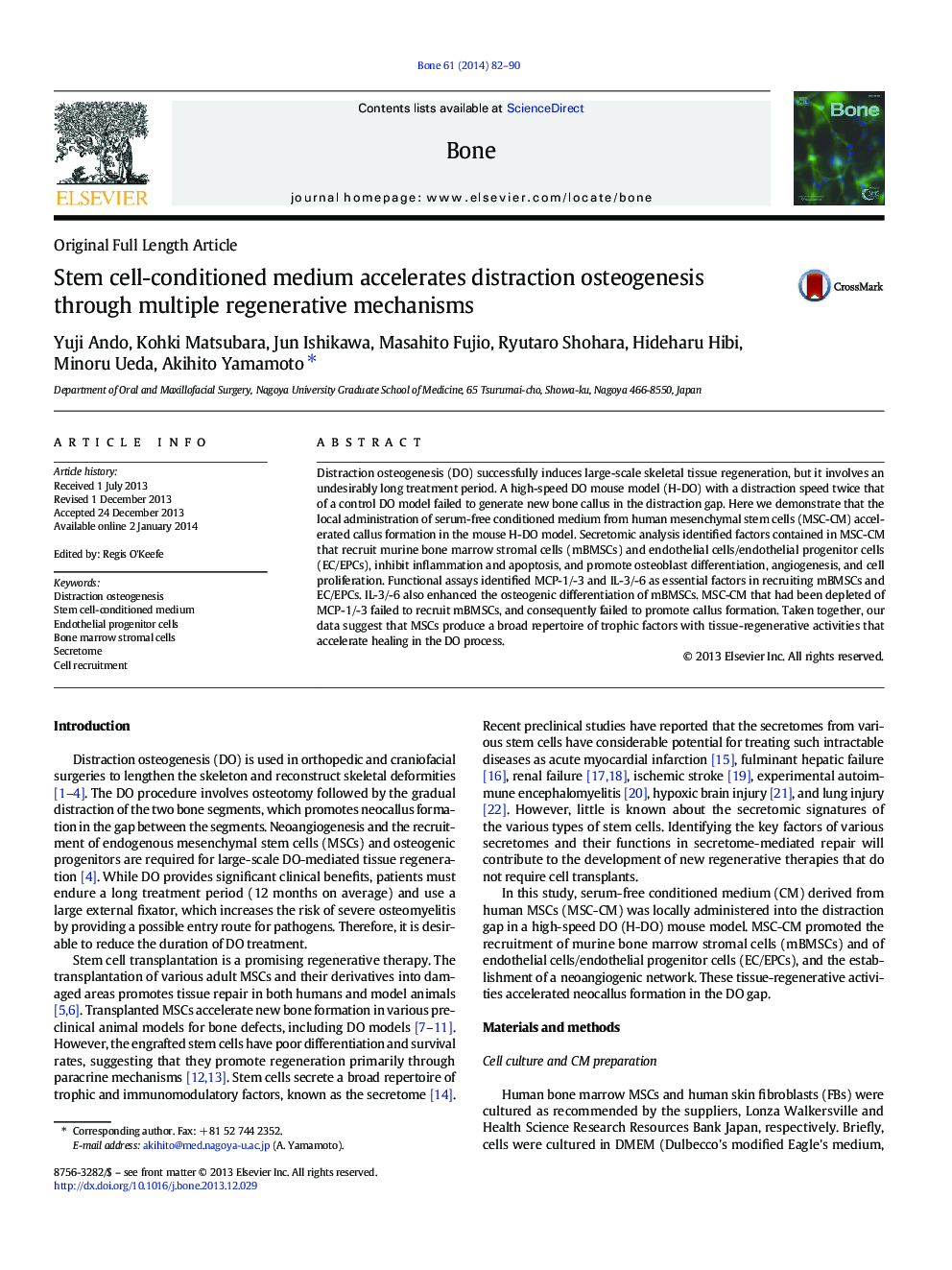| Article ID | Journal | Published Year | Pages | File Type |
|---|---|---|---|---|
| 5890252 | Bone | 2014 | 9 Pages |
â¢MSC-CM accelerates callus formation in the DO gap.â¢MSC-CM promotes the recruitment of endogenous mBMSCs and EC/EPCs.â¢MSC-CM contains multiple tissue-regenerative factors.â¢MCP-1 and MCP-3 contained in MSC-CM recruit mBMSCs to the DO gap.â¢IL-3/IL-6 in MSC-CM recruits EC/EPCs and promotes mBMSC osteogenic differentiation.
Distraction osteogenesis (DO) successfully induces large-scale skeletal tissue regeneration, but it involves an undesirably long treatment period. A high-speed DO mouse model (H-DO) with a distraction speed twice that of a control DO model failed to generate new bone callus in the distraction gap. Here we demonstrate that the local administration of serum-free conditioned medium from human mesenchymal stem cells (MSC-CM) accelerated callus formation in the mouse H-DO model. Secretomic analysis identified factors contained in MSC-CM that recruit murine bone marrow stromal cells (mBMSCs) and endothelial cells/endothelial progenitor cells (EC/EPCs), inhibit inflammation and apoptosis, and promote osteoblast differentiation, angiogenesis, and cell proliferation. Functional assays identified MCP-1/-3 and IL-3/-6 as essential factors in recruiting mBMSCs and EC/EPCs. IL-3/-6 also enhanced the osteogenic differentiation of mBMSCs. MSC-CM that had been depleted of MCP-1/-3 failed to recruit mBMSCs, and consequently failed to promote callus formation. Taken together, our data suggest that MSCs produce a broad repertoire of trophic factors with tissue-regenerative activities that accelerate healing in the DO process.
